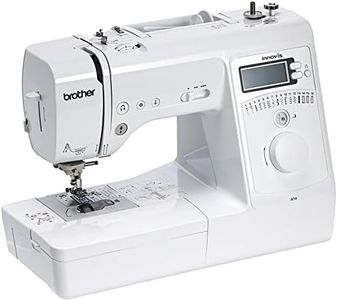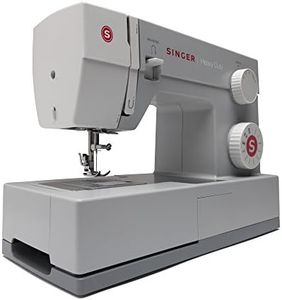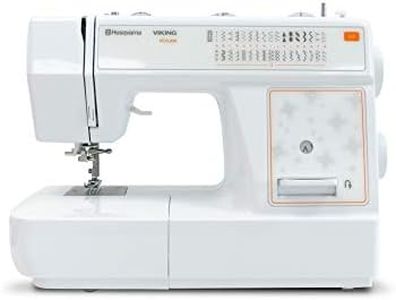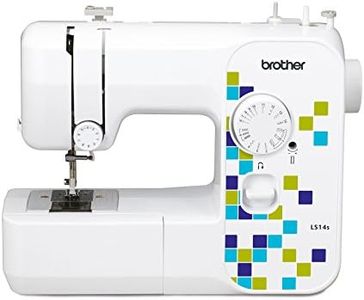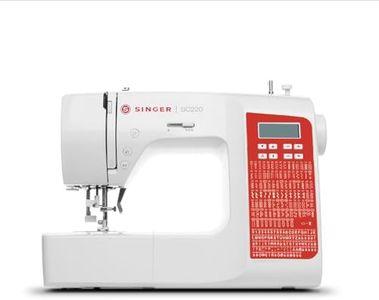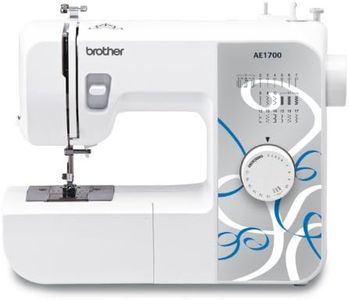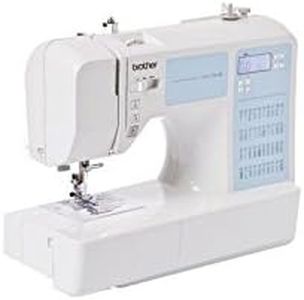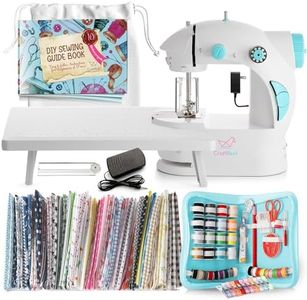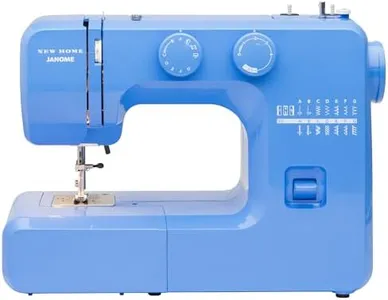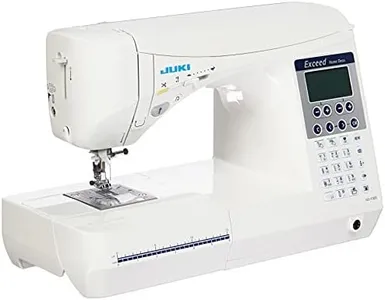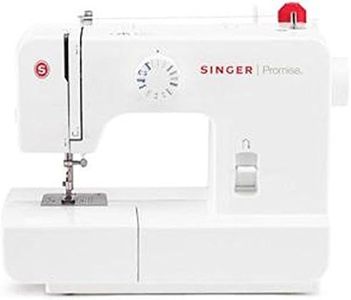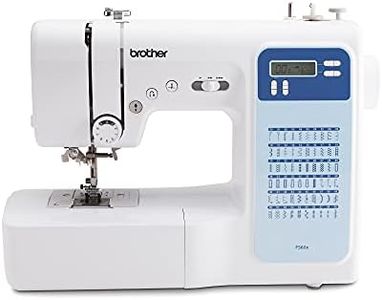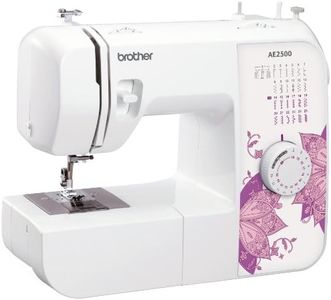We Use CookiesWe use cookies to enhance the security, performance,
functionality and for analytical and promotional activities. By continuing to browse this site you
are agreeing to our privacy policy
10 Best Beginner Sewing Machines
From leading brands and best sellers available on the web.Buying Guide for the Best Beginner Sewing Machines
Choosing a beginner sewing machine can feel overwhelming, especially with so many options available. It's important to pick a machine that matches your current skill level and the types of projects you want to start with. Focus on finding a straightforward, user-friendly model that allows you to learn basic sewing techniques without unnecessary complications or advanced features that might just confuse you. The right machine will help you build confidence and grow your skills gradually.Stitch Types and PatternsStitch types refer to the variety of stitches a sewing machine can make, such as straight, zigzag, and decorative stitches. This is important because it determines how versatile your machine will be for different projects, like clothing, crafts, or simple repairs. For beginners, you don’t need a huge range—machines usually offer between 6 and 20 basic stitches. If you’re mainly fixing clothes or sewing simple projects, a straight and zigzag stitch will cover most needs. Only consider machines with more stitches if you think you'll quickly want to try decorative or specialized sewing.
Ease of Use and ControlsEase of use includes features like simple dials, clear labeling, and straightforward threading paths. This matters because a machine that's easy to set up and operate saves you time and reduces frustration, making the learning process smoother. Some models have digital screens and buttons, while others stick with manual knobs and levers. As a beginner, look for machines that are intuitive and have clearly marked functions—you’ll find manual controls easier to understand, whereas digital ones might offer extra guidance if you are comfortable with screens.
Automatic Needle ThreaderAn automatic needle threader is a small device built into the machine that helps you suck the thread through the eye of the needle. This is important for beginners because threading a needle by hand can be fiddly and discouraging, especially if you have less dexterity or eyesight issues. Some entry-level machines include this feature—if you struggle with small or delicate tasks, prioritize a model with an automatic needle threader for convenience.
Buttonhole FunctionThe buttonhole function helps you sew neat and consistent buttonholes, often in one or four steps. This feature becomes important if you plan to sew clothes, cushions, or anything needing buttons. Machines with a one-step buttonhole feature are easier for beginners because the machine does most of the work for you. If buttonholes are something you think you’ll use frequently, look for the simplest option, usually called '1-step'; if not, a basic four-step will still allow you to learn the basics.
Speed ControlSpeed control means how fast or slow the machine can sew, sometimes adjusted by pressing the foot pedal or using a separate slider or dial. This is important because beginners often benefit from slower speeds to maintain control and learn technique. Machines with variable speed control let you adjust how fast you’d like to sew without only relying on foot pressure, which can be tricky for some. Choose a machine with easy-to-control speed if you want to practice slowly at first without feeling rushed.
Weight and SizeThe weight and size of a sewing machine affect how easy it is to move, store, or carry, which is especially relevant if you have limited space or plan to take your machine to classes. Lighter, more compact machines are easier to handle, but very lightweight machines might shift while sewing. As a beginner, look for something sturdy but not too bulky, so it stays in place when used but isn’t a pain to store or transport.
Built-In LightingBuilt-in lighting illuminates the sewing area, making it easier to see what you’re stitching. Good lighting is important for beginners to prevent mistakes and eye strain, especially if you sew in the evening or in a dim room. When comparing, consider whether the machine’s light is bright and focused on the needle area. If you have less-than-ideal lighting where you’ll sew, prioritize clear, built-in lighting in your machine.
Accessory SetThe accessory set includes extra presser feet, bobbins, needles, and sometimes a seam ripper or small screwdriver. The right accessories help you handle different fabrics and sewing jobs without buying extra parts right away. While you don’t need a huge set as a beginner, a basic set of essential feet (like a zipper foot and buttonhole foot) and a few spare needles will help you start most simple projects and make learning less frustrating.
